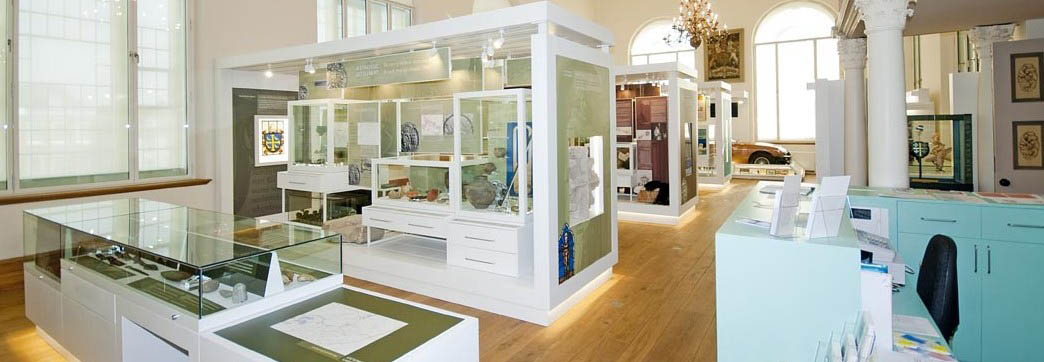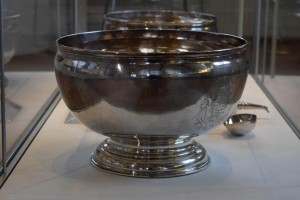Elin Bornemann, Collections Officer
Abingdon County Hall Museum is in Oxfordshire, England and is part of the Oxfordshire Museums Service. The museum is housed in the 17th-century Baroque style County Hall building, located in Abingdon’s central market place. The building was designed by a protégé of Sir Christopher Wren.

The Oxfordshire Museums Service administrates a central database on which the collections of all the member museums are catalogued. This Modes database can be accessed remotely from Abingdon Museum, but it meant that Abingdon did not have its own, independent catalogue. In 2015, Abingdon Museum decided to establish its own, in-house database, to catalogue only the collections of Abingdon Museum and in order to have full administrative power over the data. A small part of the collection had been entered previously on eHive, as a way to make the information publicly accessible. It was decided, however, that eHive was not extensive enough to serve as the museum’s main database. After some research and consultation with other users, it was decided to purchase Vernon CMS as the museum’s database. Vernon CMS can export data to eHive for public access, so we can continue to use eHive to showcase our collection online.
The software was installed on the museum’s server, and shortcuts established on each of the machines which would be used to access it. We ran into problems getting access to the system from our desktop computers. After trying several solutions, and with help from Vernon Systems staff and the museum’s IT support, we were able to trace and fix the problem which was related to firewall security restrictions on the server. In the meantime, we had also had two training sessions, so that the members of staff who are most likely to use it were introduced to the main features of Vernon CMS.

For administrative reasons, the bulk of Abingdon Museum’s collections have to stay catalogued on the Oxfordshire Modes database for the time being. To start Abingdon’s own database off, the Town Council’s collection of silver and other treasures was catalogued. The Collections Officer started by creating skeleton entries for the items, to familiarise herself with Vernon CMS by using it. The silver had not previously been accessioned, so new accession numbers were assigned and each item given its own entry. Once that first step was accomplished, the entries were fleshed out with more detailed information on materials and measurements, dates and names. The person file also started to grow, with entries on donors, makers, and other personalities from Abingdon’s history which are connected with the collection of treasures.
There are currently almost 400 objects entries on the new Abingdon Museum database. Since the initial challenges during the installation there have been no further problems with the software, and Vernon CMS has performed as we hoped. For reasons outlined above, this is only a small-scale start for Vernon CMS at Abingdon Museum, but we are confident that in time it will grow to be the museum’s main database with all the advantages which a sophisticated and well supported system like Vernon can give us.